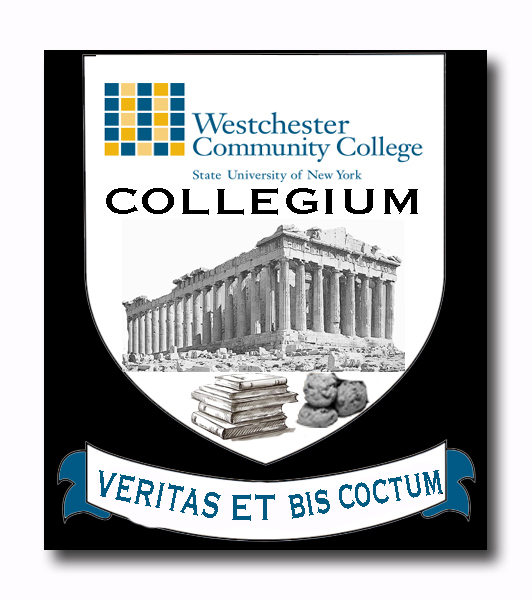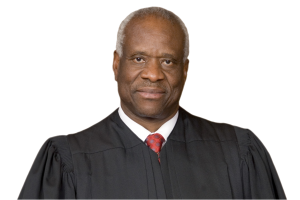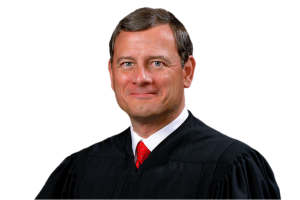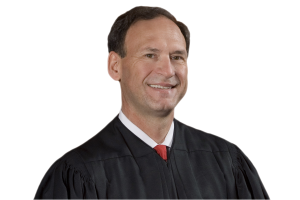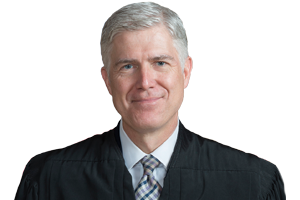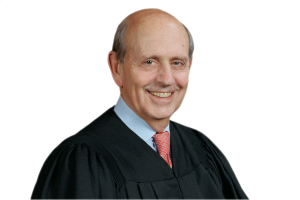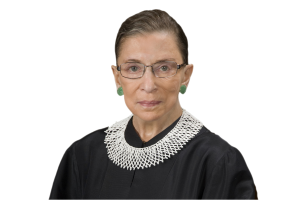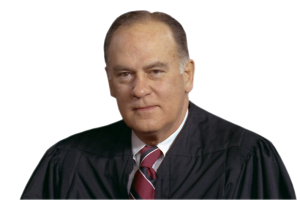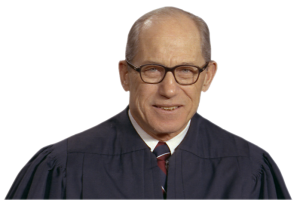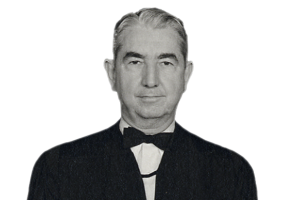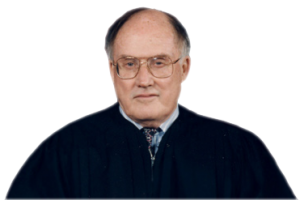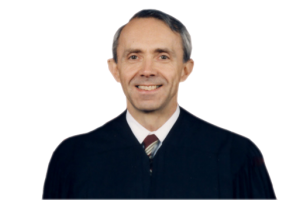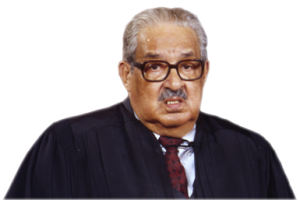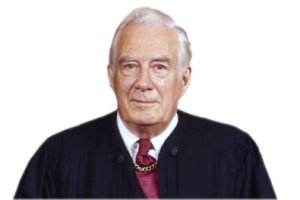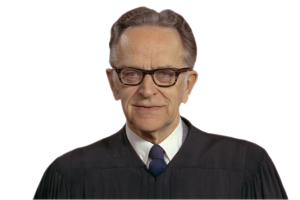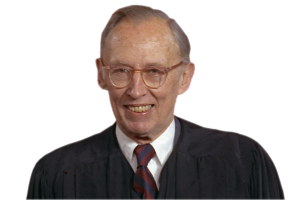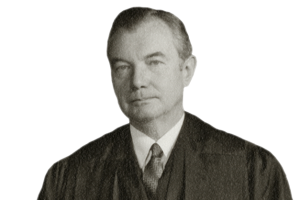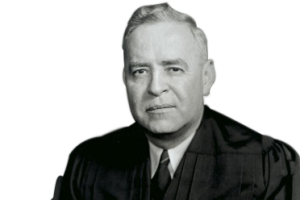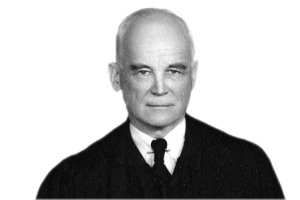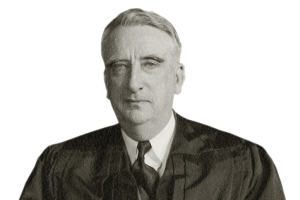COARSE DESCRIPTION
" Religion and the Supreme Court in the 21st Century: Threat or Menace?"
This is a survey course in which we will cover too many cases in too short a time, asking irrelevant questions for which we will have no answers along the way. We will listen to clips taken out of context in which judges more interesting and entertaining than the instructor will dazzle and confuse the listeners; and contradict quotes the instructor placed on the class blog.
Digressions in which the ethics of the court will be excoriated will be plentiful.1 hour and fifteen minutes on a Wednesday morning -- timed to geriatric bladders. Coffee and cookies optional.
Large parking spaces will be provided and the instructor will be miked up for the hard of hearing.
Prerequisite: Not having heard the instructors jokes before.
First Amendment
"Congress shall make no law respecting an establishment of religion,
or prohibiting the free exercise thereof; "
o0o o0o
At the beginning of each session, the Marshal of the United States Supreme Court strikes a gavel and announces:
COURSE SYLLABUS
o0o
Weeks One and Two
Religion in the colonies prior to the First Amendment
The First Amendment and the Free Exercise Clause
The First Amendment and the Establishment Clause
Religious Tests For Holding Office
". . . prohibit the government from making any law respecting an establishment of religion, or prohibiting the free exercise thereof. Together, the Free Exercise and Establishment Clauses guarantee religious freedom, deeming religious beliefs and religious expression . . . too precious to be either proscribed or prescribed by the State. In many ways, the two provisions work together to ensure government. .
- . . .., Reynolds v. United States, 98 U.S. 145, 162 (1878).
Week 1 -- Materials
“Every Person should go to church, Sundays and Holidays, or lye Neck and Heels that Night, and be a Slave to the Colony the following Week; for the second Offence, he should be a Slave for a Month; and for the third, a Year and a Day.”
Governor Argall’s Decree -- Virginia 1617
o0o
George Washington's letter to the Jews of Newport, R.I.:
"May the Children of the Stock of Abraham, who dwell in this land, continue to merit and enjoy the good will of the other Inhabitants; while every one shall sit in safety under his own vine and fig tree, and there shall be none to make him afraid. May the father of all mercies scatter light and not darkness in our paths, and make us all in our several vocations useful here, and in his own due time and way everlastingly happy.
Go: Washington"
- The Federalist No. 52 (Alexander Hamilton). See also The Federalist No. 57 (Alexander Hamilton or James Madison) (Who are to be the objects of popular choice? Every citizen whose merit may recommend him to the esteem and confidence of his country. No qualification of wealth, of birth, of religious faith, or of civil profession is permitted to fetter the judgment or disappoint the inclination of. . .
o0o o0o
Article VI of the Constitution provides : "No religious Test shall ever be required as a Qualification to any Office or public Trust under the United States."
o0o
Article 37 of the Declaration of Rights of the Maryland Constitution provides:
"[N]o religious test ought ever to be required as a qualification for any office of profit or trust in this State, other than a declaration of belief in the existence of God . . . ."
footnote 11 in Torcaso v. Watkins, 367 US 488 : Supreme Court 1961:
Among religions in this country which do not teach what would generally be considered a belief in the existence of God are Buddhism, Taoism, Ethical Culture, Secular Humanism and others. See Washington Ethical Society v. District of Columbia, 101 U. S. App. D. C. 371, 249 F. 2d 127; Fellowship of Humanity v. County of Alameda, 153 Cal. App. 2d 673, 315 P. 2d 394; II Encyclopaedia of the Social Sciences 293; 4 Encyclopaedia Britannica (1957 ed.) 325-327; 21 id., at 797; Archer, Faiths Men Live By (2d ed. revised by Purinton), 120-138, 254-313; 1961 World Almanac 695, 712; Year Book of American Churches for 1961, at 29, 47.
When the constitutionality of a law is challenged, both state and federal courts will commonly apply one of three levels of judicial scrutiny from the spectrum of scrutiny:
Intermediate scrutiny
Rational basis review
Explained here.
The level of scrutiny that's applied determines how a court will go about analyzing a law and its effects. It also determines which party -- the challenger or the government -- has the burden of proof. Although these tests aren't exactly set in stone, there is a basic framework for the most common levels of scrutiny applied to challenged laws.
The Restoration of Religious Freedom Act:
(a) Findings
The Congress finds that—
(1) the framers of the Constitution, recognizing free exercise of religion as an unalienable right, secured its protection in the First Amendment to the Constitution;
(2) laws "neutral" toward religion may burden religious exercise as surely as laws intended to interfere with religious exercise;
(3) governments should not substantially burden religious exercise without compelling justification;
(4) in Employment Division v. Smith, 494 U.S. 872 (1990) the Supreme Court virtually eliminated the requirement that the government justify burdens on religious exercise imposed by laws neutral toward religion; and
(5) the compelling interest test as set forth in prior Federal court rulings is a workable test for striking sensible balances between religious liberty and competing prior governmental interests.
(b) Purposes
The purposes of this chapter are—
(1) to restore the compelling interest test as set forth in Sherbert v. Verner, 374 U.S. 398 (1963) and Wisconsin v. Yoder, 406 U.S. 205 (1972) and to guarantee its application in all cases where free exercise of religion is substantially burdened; and
(2) to provide a claim or defense to persons whose religious exercise is substantially burdened by government.
o0o o0o
Gonzales v. O Centro Espírita Beneficente União do Vegetal, 546 U.S. 418 (2006),, decision here.
Burwell v. Hobby Lobby Stores, Inc., 573 U.S. 682 (2014),
o0o o0o o0o o0o
WEEK 2
Borne:
However, in 2000, Congress enacted the Religious Land Use and Institutionalized Persons Act, in which it used the Spending Clause to require, for localities that receive federal funding, land use laws to accommodate religious freedom, essentially, as if RFRA had been ruled applicable to state law.
Burwell v. Hobby Lobby Stores, Inc., 573 U.S. 682 (2014),
o0o
In Little Sisters of the Poor v. Pennsylvania and Trump v. Pennsylvania, the Supreme Court held that the Trump Administration had the legal authority to promulgate rules that provide an unconditional religious exemption from the Affordable Care Act’s contraceptive coverage requirement to not-for-profit, educational, and for-profit employers.
Facts of the case
The Women’s Health Amendment to the Affordable Care Act (ACA) requires that women's health insurance include coverage for preventive health care, including contraception. The rule provided that a nonprofit religious employer who objects to providing contraceptive services may file an accommodation form requesting an exemption to the requirement, thereby avoiding paying for or otherwise participating in the provision of contraception to its employees.
In Burwell v. Hobby Lobby Stores, Inc., 573 U.S. 682 (2014), the Supreme Court held that under the Religious Freedom Restoration Act (RFRA), closely-held for-profit corporations were also entitled to invoke the exemption if they had sincere religious objections to the provision of contraceptive coverage. Then, in Wheaton College v. Burwell, 573 U.S. 958, (2014), the Court held that an entity seeking an exemption did not need to file the accommodation form; rather, its notification to the Department of Health and Human Services (HHS) was sufficient to receive the exemption. HHS and the Departments of Labor and Treasury promulgated a final rule in compliance with these rulings.
Then, in Zubik v. Burwell, 578 U.S. __ (2017), the Court considered another challenge to the rule, which asserted that merely submitting the accommodation notice “substantially burden[ed] the exercise of their religion,” in violation of RFRA. In a per curiam opinion, the Court declined to reach the merits of that question.
In 2017, the Department of Health and Human Services under the Trump administration promulgated regulations that greatly expanded the entities eligible to claim an exemption to the requirement that group health insurance plans cover contraceptive services. The new rules, which the agencies promulgated without issuing a notice of proposed rulemaking or soliciting public comment, expanded the scope of the religious exemption and added a “moral” exemption.
Pennsylvania and New Jersey challenged the rules in federal district court, alleging that they violate the Constitution, federal anti-discrimination law, and the Administrative Procedure Act (APA). After a hearing and reviewing evidence, the district court issued a nationwide injunction enjoining the rules’ enforcement, finding the states were likely to succeed on their APA claim. The U.S. Court of Appeals for the Third Circuit affirmed.
This case is consolidated with a similar case, Trump v. Pennsylvania, No. 19-454, presenting the same legal question.
Question
Did the federal government lawfully exempt religious objectors from the regulatory requirement to provide health plans that include contraceptive coverage?
Conclusion
The Departments of Health and Human Services, Labor, and the Treasury had the authority under the ACA to promulgate the religious and moral exemptions, and they promulgated those exemptions consistent with the manner required under the Administrative Procedure Act. Justice Clarence Thomas authored the five-justice majority opinion.
Masterpiece Cake Shop, LTD. v. Colorado Civil Rights Commission, 138 S. Ct. 1719 (2018)
Question
Does the application of Colorado's public accommodations law to compel a cake maker to design and make a cake that violates his sincerely held religious beliefs about same-sex marriage violate the Free Speech or Free Exercise Clauses of the First Amendment?
Craig and Mullins filed charges of discrimination with the Colorado Civil Rights Division, alleging discrimination based on sexual orientation under the Colorado Anti-Discrimination Act (CADA), §§ 24-34-301 to -804, C.R.S. 2014. After the Division issued a notice of determination finding probable cause, Craig and Mullins filed a formal complaint with the Office of Administrative Courts alleging that Masterpiece discriminated against them in a place of public accommodation in violation of CADA. The Administrative Law Judge issued a written order finding in favor of Craig and Mullins, which was affirmed by the Colorado Civil Rights Commission. On appeal, the Colorado Court of Appeals subsequently affirmed the Commission's ruling.
Question
Does the application of Colorado's public accommodations law to compel a cake maker to design and make a cake that violates his sincerely held religious beliefs about same-sex marriage violate the Free Speech or Free Exercise Clauses of the First Amendment?Conclusion
7–2 DECISION FOR MASTERPIECE CAKESHOP, LTD.
The Court reversed in a 7-2 decision, holding that the Colorado Civil Rights Commission's conduct in evaluating a cake shop owner's reasons for declining to make a wedding cake for a same-sex couple violated the Free Exercise Clause.
The Court explained that while gay persons and same-sex couples are afforded civil rights protections under the laws and the Constitution, religious and philosophical objections to same-sex marriage are protected views and can also be protected forms of expression. The Colorado law at issue in this case, which prohibited discrimination against gay people in purchasing products and services, had to be applied in a neutral manner with regard to religion. The majority acknowledged that from Phillips' perspective, creating cakes was a form of artistic expression and a component of his sincere religious beliefs.
What happened then?
In March 2019, the suit and countersuit between Phillips and the state were dropped. The state argued that, although the core issue (the intersection of nondiscrimination and religious freedom) remained unresolved, the existing case was not the proper vehicle to answer those questions. The agreement allowed Scardina, should she want, to pursue her own civil action against Masterpiece.
In June 2019, Scardina, represented by attorneys Paula Greisen and John McHugh, brought civil suit against Phillips in federal district court on the perceived discrimination. In April 2020, beyond the appeal deadline, Scardina brought a second lawsuit against Phillips in a different court, seeking more than $100,000 in damages, fines, and attorney's fees. On June 15, 2021, Denver District Judge A. Bruce Jones ruled that Phillips had violated Colorado's anti-discrimination law by refusing to bake a cake for Scardina and fined him $500. The Alliance Defending Freedom (ADF), the group representing Phillips, said it would appeal.
In October 2022, the Colorado Court of Appeals heard the case. On January 26, 2023, the court ruled that a pink-and-blue cake was not a protected form of speech and that the state nondiscrimination law did not violate the baker's freedom of religion.
o0o o0o
The Court reversed in a 7-2 decision, holding that the Colorado Civil Rights Commission's conduct in evaluating a cake shop owner's reasons for declining to make a wedding cake for a same-sex couple violated the Free Exercise Clause.
The Court explained that while gay persons and same-sex couples are afforded civil rights protections under the laws and the Constitution, religious and philosophical objections to same-sex marriage are protected views and can also be protected forms of expression. The Colorado law at issue in this case, which prohibited discrimination against gay people in purchasing products and services, had to be applied in a neutral manner with regard to religion. The majority acknowledged that from Phillips' perspective, creating cakes was a form of artistic expression and a component of his sincere religious beliefs.
In June 2019, Scardina, represented by attorneys Paula Greisen and John McHugh, brought civil suit against Phillips in federal district court on the perceived discrimination. In April 2020, beyond the appeal deadline, Scardina brought a second lawsuit against Phillips in a different court, seeking more than $100,000 in damages, fines, and attorney's fees. On June 15, 2021, Denver District Judge A. Bruce Jones ruled that Phillips had violated Colorado's anti-discrimination law by refusing to bake a cake for Scardina and fined him $500. The Alliance Defending Freedom (ADF), the group representing Phillips, said it would appeal.
In October 2022, the Colorado Court of Appeals heard the case. On January 26, 2023, the court ruled that a pink-and-blue cake was not a protected form of speech and that the state nondiscrimination law did not violate the baker's freedom of religion.
303 Creative LLC v. Elenis
Facts of the case
Lorie Smith is the owner and founder of a graphic design firm, 303 Creative LLC. She wants to expand her business to include wedding websites. However, she opposes same-sex marriage on religious grounds so does not want to design websites for same-sex weddings. She wants to post a message on her own website explaining her religious objections to same-sex weddings.
The Colorado AntiDiscrimination Act (“CADA”) prohibits businesses that are open to the public from from discriminating on the basis of numerous characteristics, including sexual orientation. The law defines discrimination not only as refusing to provide goods or services, but also publishing any communication that says or implies that an individual’s patronage is unwelcome because of a protected characteristic.
Even before the state sought to enforce CADA against her, Smith and her company challenged the law in federal court, alleging numerous constitutional violations. The district court granted summary judgment for the state, and the U.S. Court of Appeals for the Tenth Circuit affirmed.
Question
Does application of the Colorado AntiDiscrimination Act to compel an artist to speak or stay silent violate the Free Speech Clause of the First Amendment?
Five years ago, this Court recognized the “general rule” that religious and philosophical objections to gay marriage “do not allow business owners and other actors in the economy and in society to deny protected persons equal access to goods and services under a neutral and generally applicable public accommodations law.” Masterpiece Cakeshop, Ltd. v. Colorado Civil Rights Comm’n, 584 U. S. ___, ___ (2018) (slip op., at 9). The Court also recognized the “serious stigma” that would result if “purveyors of goods and services who object to gay marriages for moral and religious reasons” were “allowed to put up signs saying ‘no goods or services will be sold if they will be used for gay marriages.’ ” Id., at ___ (slip op., at 12).
Today, the Court, for the first time in its history, grants a business open to the public a constitutional right to refuse to serve members of a protected class. Specifically, the Court holds that the First Amendment exempts a website-design company from a state law that prohibits the company from denying wedding websites to same-sex couples if the company chooses to sell those websites to the public. The Court also holds that the company has a right to post a notice that says, “ ‘no [wedding websites] will be sold if they will be used for gay marriages.’ ” Ibid.
The Muslim Travel ban.
The dissent’s reference to Korematsu, however, affords this Court the opportunity to make express what is already obvious: Korematsu was gravely wrong the day it was decided, has been overruled in the court of history, and—to be clear—“has no place in law under the Constitution.” 323 U. S., at 248 (Jackson, J., dissenting).
Sherbert v. Verner
Facts of the case
Adeil Sherbert, a member of the Seventh-day Adventist Church, was fired from her job after she refused to work on Saturday, the Sabbath Day of her faith. The Employment Security Commission ruled that she could not receive unemployment benefits because her refusal to work on Saturday constituted a failure without good cause to accept available work. Under South Carolina law, employers were not allowed to require employees to work on Sunday.
Conclusion
The Free Exercise Clause prohibits the government from setting unemployment benefits eligibility requirements such that a person cannot properly observe key religious principles.
In a majority opinion written by Justice Brennan, the Court held that the state's eligibility restrictions for unemployment compensation imposed a significant burden on Sherbert's ability to freely exercise her faith. Furthermore, there was no compelling state interest which justified such a substantial burden on this basic First Amendment right.
Justices Douglas and Stewart concurred in separate opinions.
Justice Harlan, joined by Justice White, dissented on the ground that Seventh-Day Adventist was unavailable for Saturday work just as anyone who refuses Saturday work for personal reasons is unavailable, and that the effect of the Court's decision was to require South Carolina to make an exception in favor of those whose unavailability for work stems from religious convictions
Question
Is inconvenience to coworkers an “undue burden” under Title VII of the Civil Rights Act of 1964 such that it excuses an employer from providing an accommodation requested for religious exercise?Title VII requires an employer that denies a religious accommodation to show that the burden of granting an accommodation would result in substantial increased costs in relation to the conduct of its particular business.
o0o o0o
Lemon v Kurtzman 403 U.S. 602 Decision here.
o0o0o0o
McCreary Co. v ACLU, 545 U. S. (2005)
o0o
Trinity Lutheran Church of Columbia, Inc. v. Comer, 582 U.S. ___ (2017)
o0o o0o
Espinoza v. Montana Dept of Revenue,
Decision summary { from Wikipedia}:
The Court issued its decision on June 30, 2020. The 5–4 decision reversed the Montana Supreme Court's ruling and remanded the case.[14][15] Chief Justice John Roberts wrote for the majority, joined by Justices Clarence Thomas, Samuel Alito, Neil Gorsuch, and Brett Kavanaugh. Roberts wrote in his opinion that the no-aid provision (Rule 1) in the program violated the Free Exercise clause,[16] as it "bars religious schools from public benefits solely because of the religious character of the schools" and "also bars parents who wish to send their children to a religious school from those same benefits, again solely because of the religious character of the school."[17] Roberts also asserted that the Montana Supreme Court was wrong to invalidate the entire program on the basis of the no-aid provision in the state constitution.[17] Roberts wrote that "A state need not subsidize private education. But once a state decides to do so, it cannot disqualify some private schools solely because they are religious."[1] Roberts based part of the majority's opinion on the previous Trinity case where the public funds were used for a non-secular purpose (church playground improvement), while contrasting it from the decision of Locke v. Davey,[18] where the Court found that preventing the use of public scholarship funds for students entering into theology studies was constitutional.[19]
The Montana Legislature enacted a statute under which taxpayers would receive dollar-for-dollar tax credits for donations to organizations that would in turn disburse those donations to private schools for purposes of paying student tuition. The Montana Supreme Court invalidated the statute under the Montana Constitution’s bar on aid to religious schools.
Question
Does a state law that allows for funding for education generally while prohibiting funding for religious schools violate the Religion Clauses or the Equal Protection Clause of the federal Constitution?
From Justice Ginsberg's dissent:
Petitioners argue that the Montana Supreme Court’s decision fails when measured against Trinity Lutheran. I do not see how. Past decisions in this area have entailed differential treatment occasioning a burden on a plaintiff ’s religious exercise. Lyng, 485 U. S., at 450–451; Trinity Lutheran, 582 U. S., at ___ (slip op., at 11). This case is missing that essential component. Recall that the Montana court remedied the state constitutional violation by striking the scholarship program in its entirety. Under that decree, secular and sectarian schools alike are ineligible for benefits, so the decision cannot be said to entail differential treatment based on petitioners’ religion. Put somewhat differently, petitioners argue that the Free Exercise Clause requires a State to treat institutions and people neutrally when doling out a benefit—and neutrally is how Montana treats them in the wake of the state court’s decision.
Accordingly, the Montana Supreme Court’s decision does not place a burden on petitioners’ religious exercise. Petitioners may still send their children to a religious school. And the Montana Supreme Court’s decision does not pressure them to do otherwise. Unlike the law in Trinity Lutheran, the decision below puts petitioners to no “choice”: Neither giving up their faith, nor declining to send their children to sectarian schools, would affect their entitlement to scholarship funding. 582 U. S., at ___ (slip op., at 10). There simply are no scholarship funds to be had.
From Justice Breyer's Dissent:
Montana’s law does not punish religious exercise. Cf. Locke, 540 U. S., at 720 (citing Church of
Lukumi Babalu Aye, Inc. v. Hialeah, 508 U.S. 520, 535 (1993)); see ante, at 11. It does not deny anyone, because of their faith, the right to participate in political affairs of the community. Cf. Locke, 540 U. S., at 720–721 (citing McDaniel v. Paty, 435 U.S. 618, 626 (1978)); see ante, at 11–12. And it does not require students to choose between their religious beliefs and receiving secular government aid such as unemployment benefits. Cf. Locke, 540 U. S., at 720 (citing Sherbert v. Verner, 374 U.S. 398, 403–404 (1963)); see ante, at 11–12. The State has simply chosen not to fund programs that, in significant part, typically involve the teaching and practice of religious devotion. And “a legislature’s decision not to subsidize the exercise of a fundamental right does not infringe the right, and thus is not subject to strict scrutiny.” Regan v. Taxation With Representation of Wash., 461 U.S. 540, 549 (1983); see also Lyng v. Automobile Workers, 485 U.S. 360, 368 (1988).
o0o
Week 4
Creches and Crosses
From McCreary: The American Civil Liberties Union (ACLU) sued three Kentucky counties in federal district court for displaying framed copies of the Ten Commandments in courthouses and public schools.
Facts of the case
Thomas Van Orden sued Texas in federal district court, arguing a Ten Commandments monument on the grounds of the state capitol building represented an unconstitutional government endorsement of religion. Orden argued this violated the First Amendment's establishment clause, which prohibits the government from passing laws "respecting an establishment of religion." The district court and the Fifth Circuit Court of Appeals ruled against Orden and said the monument served a valid secular purpose and would not appear to a reasonable observer to represent a government endorsement of religion.
Question
Does a Ten Commandments monument on the grounds of a state capitol building violate the First Amendment's establishment clause, which barred the government from passing laws "respecting an establishment of religion?"
No. In 5-4 decision, and in a four-justice opinion delivered by Chief Justice William H. Rehnquist, the Court held that the establishment clause did not bar the monument on the grounds of Texas' state capitol building. The plurality deemed the Texas monument part of the nation's tradition of recognizing the Ten Commandments' historical meaning. Though the Commandments are religious, the plurality argued, "simply having religious content or promoting a message consistent with a religious doctrine does not run afoul of the establishment clause."
Public Displays of Religious symbols
"It is this Court's mission to identify, in Justice Brennan's words, the line between the permissible and the impermissible, and to discern that that line accords with history and faithfully reflects the understanding of the founding fathers"
"To forbid the use of this one passive symbol — the creche — at the very time people are taking note of the season with Christmas hymns and carols in public schools and other public places, and while the Congress and Legislatures open sessions with prayers by paid chaplains would be a stilted over-reaction contrary to our history and to our holdings. If the presence of the creche in this display violates the Establishment Clause, a host of other forms of taking official note of Christmas, and of our religious heritage, are equally offensive to the Constitution.
Lynch v. Donnelly, 465 U.S. 668, 104 S.Ct. 1355 at 1365, 79 L.Ed.2d 604 (1984), a creche decision.
Facts of the case
The city of Pawtucket, Rhode Island, annually erected a Christmas display located in the city's shopping district. The display included such objects as a Santa Claus house, a Christmas tree, a banner reading "Seasons Greetings," and a nativity scene. The creche had been included in the display for over 40 years. Daniel Donnelly objected to the display and took action against Dennis Lynch, the Mayor of Pawtucket.
Question
Did the inclusion of a nativity scene in the city's display violate the Establishment Clause of the First Amendment?
Argument here.
Conclusion
No. In a 5-to-4 decision, the Court held that notwithstanding the religious significance of the creche, the city had not violated the Establishment Clause. The Court found that the display, viewed in the context of the holiday season, was not a purposeful or surreptitious effort to advocate a particular religious message. The Court found that the display merely depicted the historical origins of the Holiday and had "legitimate secular purposes." The Court held that the symbols posed no danger of establishing a state church and that it was "far too late in the day to impose a crabbed reading of the [Establishment] Clause on the country."
The Scarsdale Creche case: 14 pages
"For the foregoing reasons, we reverse the judgment of the district court. We remand for the entry of an injunction prohibiting the Village of Scarsdale from relying on the establishment clause as a reason for prohibiting the erection of a creche at Boniface Circle, a traditional public forum, for a period of approximately two weeks during the Christmas holiday season; for action regarding a disclaimer sign or signs; and for other such action as is consistent with our determination herein."
Reversed and remanded. . . . McCreary v. Stone, 739 F. 2d 716 - Court of Appeals, 2nd Circuit 1984 Decision is here.
Allegheny Co. v. ACLU argument here
Two public-sponsored holiday displays in Pittsburgh, Pennsylvania, were challenged by the American Civil Liberties Union. The first display involved a Christian nativity scene inside the Allegheny County Courthouse. The second display was a large Chanukah menorah, erected each year by the Chabad Jewish organization, outside the City-County building. The ACLU claimed the displays constituted state endorsement of religion. This case was decided together with Chabad v. ACLU and City of Pittsburgh v. ACLU of Greater Pittsburgh.
Question
Did the public displays violate the Establishment Clause of the First Amendment?
In Bladensburg, Maryland, as part of a memorial park honoring veterans is a 40-foot tall cross, which is the subject of this litigation. Construction on the cross began in 1918, and it was widely described using Christian terms and celebrated in Christian services. In 1961, Maryland-National Capital Park and Planning Commission acquired the cross and the land, as well as the responsibility to maintain, repair, and otherwise care for the cross. The Commission has spent approximately $117,000 to maintain and repair the cross, and in 2008, it set aside an additional $100,000 for renovations.
Several non-Christian residents of Prince George’s County, Maryland, expressed offense at the cross, which allegedly amounts to governmental affiliation with Christianity. American Humanist Association is a nonprofit organization advocating for separation of church and state.
The case
In this case, the Supreme Court evaluated the constitutionality of a cross-shaped war memorial. The memorial honors soldiers who died in World War I. The cross was finalized in 1925 and has been supported through religious fundraising efforts. It sits at a highly trafficked intersection in Bladensburg, Maryland. The state of Maryland acquired the land in 1961 as it became concerned with traffic at the intersection.
The American Legion is a veterans’ group that helps to sustain the memorial. The group, along with the Maryland park planning commission, argued the existence of a cross on public property is not an inherent Establishment Clause violation. The cross is a war memorial, not a government endorsement of religion.
But the American Humanist Association disagrees. The humanists sued to get the cross moved from government property. They argued the cross is clearly a symbol for Christianity; it sits on government property at a busy intersection; and it sends a message to the public that the government endorses Christianity.
Supreme Court precedent
The last time the Supreme Court set out a specific analytical framework for dealing with Establishment Clause cases was in 1971. In Lemon v. Kurtzman, the Court was asked to rule if the government could financially support religious schools. In a unanimous ruling, the Court said no and declared a three-part analysis on how to analyze Establishment Clause cases.
Under the “Lemon Test,”
The law must have a secular legislative purpose;
The law’s principal effect must neither promote nor inhibit religion; and
The law must not foster “excessive government entanglement with religion.”
However, the Court has not consistently followed the Lemon Test since then. In several cases, the Justices have found the test too rigid. For example, in 2005, the Court declined to use the Lemon Test when evaluating a memorial with the text of the Ten Commandments on Texas Capitol grounds.
In Van Orden v. Perry, five of the Justices agreed the Ten Commandments memorial was fine (not a government endorsement of religion). The Justices did not use the Lemon Test but they also couldn’t agree on another “test” to evaluate Establishment Clause cases. The five Justices who came to the same result (the memorial is constitutional) all agreed that the government is not expected to completely ignore religion. A religious symbol might actually represent a secular message. Some of the Justices argued that as long as the government display of a religious symbol or message isn’t coercive or imposing, it doesn’t violate the Establishment Clause. Justice Breyer was the moderate one of the five in the majority ruling. In his concurrence, Breyer said courts should evaluate the message as a whole and consider its history to determine whether the monument has a secular and not just a religious message.
Question
- Is the display and maintenance of the cross unconstitutional?
- Under what test should the constitutionality of a passive display incorporating religious symbolism be assessed?
- Does the expenditure of funds to maintain the cross amount to the government’s excessive entanglement with religion?
Ruling in this case: the memorial is constitutional
Seven of the Justices agreed that the cross-shaped memorial in Bladensburg does not violate the Establishment Clause. Justice Alito wrote for the Court. He outlined the history of the memorial as being one that represented community grief at the loss of soldiers from horrible conflict and that the memorial has been a prominent landmark for over 100 years. He wrote that a symbol like the cross isn’t always a religious symbol. It can have — and has had — much more meaning than that throughout history. The cross was a well-recognized symbol of World War I, and there’s no evidence that this memorial in particular was meant to be discriminatory of any religion.
Regarding memorials generally, Alito said they can adopt new purposes over time; their messages may change. Furthermore, removing a symbol that has such a longstanding history may cause more conflict than it was meant to resolve. It may not be seen as a neutral action but as an action against religion generally, something the Establishment Clause wasn’t meant to do.
Alito wrote that the Lemon Test is unable to capture the complexities of symbols and religious practices. He went on to outline a standard presumption of constitutionality that courts should apply in cases of challenges to memorials on public property or to government-sponsored religious practices. That’s where he lost three Justices, who agreed generally but wanted to make clarifications.
The Establishment Clause standard for memorial cases
Justice Alito’s opinion became a plurality opinion (going from 7 to 4 Justices) for his wording of a proposed standard for memorial cases like this one. Alito said that for Establishment Clause cases in which courts are deciding the validity of memorials, symbols and religious practices with longstanding histories, there should be a presumption of Constitutionality. Kagan, Thomas and Gorsuch generally agreed, but they wanted to clarify slight distinctions to that standard.
Kagan was willing to agree generally that memorials with longstanding histories are probably Constitutional, and she signed onto a concurring opinion that Breyer wrote. Breyer had signed onto Alito’s version but stated one clarification: that a monument still must be evaluated in terms of “its particular historical context and its long-held place in the community.” As Kagan emphasized when she wrote in her own concurrence, she believes it’s still important for courts to consider the unique purposes and effects of a monument in evaluating the history of the monument — before granting the presumption of Constitutionality. In Breyer and Kagan’s view, “A newer memorial . . . would not necessarily be permissible.”
Thomas and Gorsuch also generally agreed with the Court’s presumption of validity for monument cases, but they would be even more lenient and allow monuments that are newer to qualify for the same presumption. So a monument erected in 2014 could still have a “longstanding history” because of what it represents and be presumptively Constitutionally valid.
Overruling Lemon for Establishment Clause cases generally
Two of the Justices said they would overrule Lemon outright. It’s clear the majority doesn’t actually support the Lemon Test, but neither the majority opinion nor the plurality outright overruled it. Kavanagh and Thomas would have. They wrote separately. Thomas proposed a different rule for Establishment Clauses cases, and Kavanaugh outlined a set of principles that tended to be the illustrative factors for Establishment Clause cases.
Standing for memorial cases
Gorsuch wrote an opinion arguing that in memorial cases, the “offended observer” shouldn’t even have standing to sue. Thomas signed on (agreed).
Establishment clause claims against states
Thomas had a somewhat radical view that the Establishment Clause doesn’t entitle people to sue state governments for monuments on public property and religious practices performed by government officials. While the Constitution permits that type of case against the federal government, he believes the text of the Clause does as it applies to states only allows challenges to state laws that violate the separation between church and state.
The Dissent
Justice Ginsburg wrote the dissent for herself and Justice Sotomayor. Ginsburg argues that the cross is clearly a symbol of the Christian faith and not of other faiths, and she disagrees with the majority’s conclusion that the cross can be a secular symbol in certain contexts.
Just as a Star of David is not suitable to honor Christians who died serving their country, so a cross is not suitable to honor those of other faiths who died defending their nation.
Ginsburg quotes Thomas Jefferson that the Establishment Clause is meant to “buil[d] a wall of separation between church and state.” The relevant inquiry to Ginsburg is to determine whether the memorial has “the effect of endorsing religion.” She asks if the display “convey[s] a message that religion or a particular religious belief is favored or preferred.” And she answers in this case, yes.
By maintaining the Peace Cross on a public highway, the Commission elevates Christianity over other faiths, and religion over nonreligion. Memorializing the service of American soldiers is an “admirable and unquestionably secular” objective. But the Commission does not serve that objective by displaying a symbol that bears “a starkly sectarian message.”
Ginsburg gives a historical account of the Latin cross and includes a discussion of the controversy of religions symbols on graves of fallen World War I soldiers. It’s clear based on this history, she argues, that the cross to represent sacrifice is not a secular symbol. It’s a Christian one, and when it’s on public property, it sends a message to people who do not associate with that faith that they are outsiders.
o0o o0o
Week Five
Religion and the Schools
ERRATA: Thomas Jefferson did not cut God out of the Bible. Instead: "The Life and Morals of Jesus of Nazareth, was completed in 1820 by cutting and pasting with a razor and glue numerous sections from the New Testament as extractions of the doctrine of Jesus. Jefferson's condensed composition excludes all miracles by Jesus and most mentions of the supernatural, including sections of the four gospels that contain the Resurrection and most other miracles, and passages that portray Jesus as divine.
Finishing last week's cases and issues:
Carson v Makin,(2021)
Facts of the case
The State of Maine relies on local school administrative units (SAUs) to ensure that every school-age child in the state has access to a free education. Not every SAU operates its own public secondary school. To meet the state requirements, an SAU without its own public secondary school may either (1) contract with a secondary school to provide school privileges or (2) pay the tuition of a secondary school at which a particular student is accepted. In either circumstance, the secondary school must be either a public school or an “approved” private school.
To be an “approved” school, a private school must meet the state’s compulsory attendance requirements (which can be demonstrated by accreditation by a New England association of schools and colleges or by approval by the Maine Department of Education), and it must be “nonsectarian in accordance with the First Amendment.”
The Carsons, Gillises, and Nelsons live in SAUs that do not operate a public secondary school of their own but instead provide tuition assistance to parents who send their children to an “approved” private school. The three families opted to send their children to private schools that are accredited but do not meet the nonsectarian requirement because they are religiously affiliated. Because the schools are not “approved,” they do not qualify for tuition assistance. The families filed a lawsuit in federal court arguing that the “nonsectarian” requirement violates the Constitution on its face and as applied. On cross-motions for summary judgment, the district court granted judgment to the State and denied judgment to the plaintiffs. The U.S. Court of Appeals for the First Circuit affirmed, noting that it had twice before rejected similar challenges, and even though the U.S. Supreme Court had decided two relevant cases in the interim, those cases do not produce a different outcome here.
Question
Does a state law prohibiting students participating in an otherwise generally available student-aid program from choosing to use their aid to attend schools that provide religious, or “sectarian,” instruction violate the Religion Clauses or Equal Protection Clause of the U.S. Constitution?
Argument here.
Decision: (Full decision here)
Conclusion
Maine’s “nonsectarian” requirement for otherwise generally available tuition assistance payments to parents who live in school districts that do not operate a secondary school of their own violates the Free Exercise Clause of the First Amendment. Chief Justice Jonh Roberts authored the majority opinion of the Court.
Two cases resolve the dispute in this case. In Trinity Lutheran Church of Columbia, Inc. v. Comer, the Court held that the Free Exercise Clause did not permit Missouri to discriminate against otherwise eligible recipients by disqualifying them from a public benefit solely because of their religious character. And in Espinoza v. Montana Department of Revenue, the Court held that a provision of the Montana Constitution barring government aid to any school “controlled in whole or in part by any church, sect, or denomination” violated the Free Exercise Clause because it prohibited families from using otherwise available scholarship funds at religious schools. Applying those precedents to this case, Maine may not choose to subsidize some private schools but not others on the basis of religious character.
Justice Stephen Breyer authored a dissenting opinion, in which Justices Sonia Sotomayor and Elena Kagan joined, arguing that the majority gives “almost exclusive” attention to the Free Exercise Clause while paying “almost no attention” to the Establishment Clause. In Justice Breyer’s view, Maine’s nonsectarian requirement strikes the correct balance between the two clauses.
Justice Sotomayor dissented separately, as well, to highlight the Court’s “increasingly expansive view of the Free Exercise Clause” that “risks swallowing the space between the Religion Clauses.”
o0o o0o
Everson v. Board of Education, 330 U.S. 1 (1947)Everson v. Board of Education of the Township of Ewing
[No audio]
Facts of the case
A New Jersey law authorized reimbursement by local school boards of the costs of transportation to and from schools, including private schools. 96% of the private schools who benefitted from this law were parochial Catholic schools. Arch R. Everson, a taxpayer in Ewing Township, filed a lawsuit alleging that this indirect aid to religion violated both the New Jersey state constitution and the First Amendment. After losing in state courts, Everson appealed to the U.S. Supreme Court on purely federal constitutional grounds.
Question
Did the New Jersey statute violate the Establishment Clause of the First Amendment?
Conclusion
A divided Court held that the law did not violate the Constitution. Justice Black reasoned that the law did not pay money to parochial schools, nor did it support them directly in anyway. It was rather enacted to assist parents of all religions with getting their children to school.
Justices Jackson, Frankfurter, Rutledge, and Burton dissented.
From the dissent:
[
MR. JUSTICE JACKSON, dissenting.
I find myself, contrary to first impressions, unable to join in this decision. I have a sympathy, though it is not ideological, with Catholic citizens who are compelled by law to pay taxes for public schools, and also feel constrained by conscience and discipline to support other schools for their own children. Such relief to them this case involves is not, in itself, a serious burden to taxpayers, and I had assumed it to be as little serious in principle. Study of this case convinces me otherwise. The Court's opinion marshals every argument in favor of state aid, and puts the case in its most favorable light, but much of its reasoning confirms my conclusions that there are no good grounds upon which to support the present legislation. In fact, the undertones of the opinion, advocating complete and uncompromising separation of Church from State, seem utterly discordant with its conclusion, yielding support to their commingling in educational matters.
The Court sustains this legislation by assuming two deviations from the facts of this particular case; first, it assumes a state of facts the record does not support, and secondly, it refuses to consider facts which are inescapable on the record.
The Court concludes that this
"legislation, as applied, does no more than provide a general program to help parents get their children, regardless of their religion, safely and expeditiously to and from accredited schools,"
and it draws a comparison between "state provisions intended to guarantee free transportation" for school children with services such as police and fire protection, and implies that we are here dealing with "laws authorizing new types of public services. . . ." This hypothesis permeates the opinion. The facts will not bear that construction.
A policeman protects a Catholic, of course, -- but not because he is a Catholic; it is because he is a man, and a member of our society. The fireman protects the Church school -- but not because it is a Church school; it is because it is property, part of the assets of our society. Neither the fireman nor the policeman has to ask before he renders aid, "is this man or building identified with the Catholic Church?" But, before these school authorities draw a check to reimburse for a student's fare, they must ask just that question, and, if the school is a Catholic one, they may render aid because it is such, while if it is of any other faith or is run for profit, the help must be withheld. To consider the converse of the Court's reasoning will best disclose its fallacy. That there is no parallel between police and fire protection and this plan of reimbursement is apparent from the incongruity of the limitation of this Act if applied to police and fire service. Could we sustain an Act that said the police shall protect pupils on the way to or from public schools and Catholic schools, but not
while going to and coming from other schools, and firemen shall extinguish a blaze in public or Catholic school buildings, but shall not put out a blaze in Protestant Church schools or private schools operated for profit? That is the true analogy to the case we have before us, and I should think it pretty plain that such a scheme would not be valid.
The Court's holding is that this taxpayer has no grievance, because the state has decided to make the reimbursement a public purpose, and therefore we are bound to regard it as such. I agree that this Court has left, and always should leave, to each state great latitude in deciding for itself, in the light of its own conditions, what shall be public purposes in its scheme of things. It may socialize utilities and economic enterprises and make taxpayers' business out of what conventionally had been private business. It may make public business of individual welfare, health, education, entertainment or security. But it cannot make public business of religious worship or instruction, or of attendance at religious institutions of any character. There is no answer to the proposition, more fully expounded by MR. JUSTICE RUTLEDGE, that the effect of the religious freedom Amendment to our Constitution was to take every form of propagation of religion out of the realm of things which could directly or indirectly be made public business, and thereby be supported in whole or in part at taxpayers' expense. That is a difference which the Constitution sets up between religion and almost every other subject matter of legislation, a difference which goes to the very root of religious freedom and which the Court is overlooking today. This freedom was first in the Bill of Rights because it was first in the forefathers' minds; it was set forth in absolute terms, and its strength is its rigidity. It was intended not only to keep the states' hands out of religion, but to
keep religion's hands off the state, and, above all, to keep bitter religious controversy out of public life by denying to every denomination any advantage from getting control of public policy or the public purse. Those great ends, I cannot but think, are immeasurably compromised by today's decision.
This policy of our Federal Constitution has never been wholly pleasing to most religious groups. They all are quick to invoke its protections; they all are irked when they feel its restraints. This Court has gone a long way, if not an unreasonable way, to hold that public business of such paramount importance as maintenance of public order, protection of the privacy of the home, and taxation may not be pursued by a state in a way that even indirectly will interfere with religious proselyting. See dissent in Douglas v. Jeannette, 319 U. S. 157, 319 U. S. 166; Murdock v. Pennsylvania, 319 U. S. 105; Martin v. Struthers, 319 U. S. 141; Jones v. Opelika, 316 U. S. 584, reversed on rehearing, 319 U. S. 103.
But we cannot have it both ways. Religious teaching cannot be a private affair when the state seeks to impose regulations which infringe on it indirectly, and a public affair when it comes to taxing citizens of one faith to aid another, or those of no faith to aid all. If these principles seem harsh in prohibiting aid to Catholic education, it must not be forgotten that it is the same Constitution that alone assures Catholics the right to maintain these schools at all when predominant local sentiment would forbid them. Pierce v. Society of Sisters, 268 U. S. 510. Nor should I think that those who have done so well without this aid would want to see this separation between Church and State broken down. If the state may aid these religious schools, it may therefore regulate them. Many groups have sought aid from tax funds, only to find that it carried political controls with it. Indeed, this Court has
declared that "It is hardly lack of due process for the Government to regulate that which it subsidizes." Wickard v. Filburn, 317 U. S. 111, 317 U. S. 131.
But, in any event, the great purposes of the Constitution do not depend on the approval or convenience of those they restrain. I cannot read the history of the struggle to separate political from ecclesiastical affairs, well summarized in the opinion of MR. JUSTICE RUTLEDGE, in which I generally concur, without a conviction that the Court today is unconsciously giving the clock's hands a backward turn.
steadily gives way before continuing corrosive decision.
o0o o0o
Abington School District v. Schempp, 374 U.S. 203 (1963) [No oral arg.]
Facts of the case
Under Pennsylvania law, public schools were required to read from the bible at the opening of each school day. The school district sought to enjoin enforcement of the statute. The district court ruled that the statute violated the First Amendment, even after the statute had been amended to permit a student to excuse himself.
The Court consolidated this case with one involving Maryland atheists who challenged a city rule that provided for opening exercises in the public schools that consisted primarily of reading a chapter from the bible and the Lord's Prayer. The state's highest court held the exercise did not violate the First Amendment. The religious character of the exercise was admitted by the state.
Question
Did the Pennsylvania law requiring public school students to participate in classroom religious exercises violate the religious freedom of students as protected by the First and Fourteenth Amendments?
Conclusion
Public schools cannot sponsor Bible readings and recitations of the Lord’s Prayer under the First Amendment’s Establishment Clause.
In an opinion authored by Justice Clark, the majority concluded that, in both cases, the laws required religious exercises and such exercises directly violated the First Amendment. The Court affirmed the Pennsylvania decision, and reversed and remanded the Maryland decision because the mandatory reading from the bible before school each day was found to be unconstitutional.
Justice Stewart dissented, expressing the view that on the records it could not be said that the Establishment Clause had necessarily been violated. He would remand both cases for further hearings.
Facts of the case
The New York State Board of Regents authorized a short, voluntary prayer for recitation at the start of each school day. A group of organizations joined forces in challenging the prayer, claiming that it violated the Establishment Clause of the First Amendment. The New York Court of Appeals rejected their arguments.
Question
Does the reading of a nondenominational prayer at the start of the school day violate the "establishment of religion" clause of the First Amendment?
Decision here: 370 US 421 (1962)
The state cannot hold prayers in public schools, even if participation is not required and the prayer is not tied to a particular religion.
In an opinion authored by Hugo L. Black, the Court held that respondent's decision to use its school system to facilitate recitation of the official prayer violated the Establishment Clause. Specifically, the policy breached the constitutional wall of separation between church and state. The Court ruled that the constitutional prohibition of laws establishing religion meant that government had no business drafting formal prayers for any segment of its population to repeat in a government-sponsored religious program. The Court held that respondent's provision of the contested daily prayer was inconsistent with the Establishment Clause.
Justice Douglas concurred in the judgment on the ground that the state's financing a religious exercise violated the First Amendment.
Justice Stewart dissented, arguing that no "official religion" was established by permitting those
o0o o0o
Fulton v. Philadelphia,
Facts of the case
In March 2018, the City of Philadelphia barred Catholic Social Services (CSS) from placing children in foster homes because of its policy of not licensing same-sex couples to be foster parents. CSS sued the City of Philadelphia, asking the court to order the city to renew their contract. CSS argued that its right to free exercise of religion and free speech entitled it to reject qualified same-sex couples because they were same-sex couples, rather than for any reason related to their qualifications to care for children.
The district court denied CSS’s motion for a preliminary injunction, and the Third Circuit affirmed, finding that the City’s non-discrimination policy was a neutral, generally applicable law and that CSS had not demonstrated that the City targeted CSS for its religious beliefs or was motivated by ill will against its religion.
Question
1. To succeed on their free exercise claim, must plaintiffs prove that the government would allow the same conduct by someone who held different religious views, or only provide sufficient evidence that a law is not neutral and generally applicable?
2. Should the Court revisit its decision in Employment Division v. Smith?
3. Does the government violate the First Amendment by conditioning a religious agency’s ability to participate in the foster care system on taking actions and making statements that directly contradict the agency’s religious beliefs?
Argument here.
Decision
The refusal of Philadelphia to contract with CSS for the provision of foster care services unless CSS agrees to certify same-sex couples as foster parents violates the Free Exercise Clause of the First Amendment. Chief Justice John Roberts authored the majority opinion of the Court.
Philadelphia’s actions burdened CSS’s religious exercise by forcing it either to curtail its mission or to certify same-sex couples as foster parents, in violation of its stated religious beliefs. Although the Court held in Employment Division v. Smith that neutral, generally applicable laws may incidentally burden religion, the Philadelphia law was not neutral and generally applicable because it allowed for exceptions to the anti-discrimination requirement at the sole discretion of the Commissioner. Additionally, CSS’s actions do not fall within public accommodations laws because certification as a foster parent is not “made available to the public” in the usual sense of the phrase. Thus, the non-discrimination requirement is subject to strict scrutiny, which requires that the government show the law is necessary to achieve a compelling government interest.
The Court pointed out that the question is not whether the City has a compelling interest in enforcing its non-discrimination policies generally, but whether it has such an interest in denying an exception to CSS. The Court concluded that it did not.
From a petition here seeking Supreme Court review in 2000
February 17, 2000.:
The beliefs which have led petitioner not to pay federal income tax voluntarily are indisputably religious *13 in nature. See 42 U.S.C. § 2000bb-2(4) ( “exercise of religion” under RFRA is same as under Constitution); Church of the Lukumi Babalu Aye, Inc. v. City of Hialeah, 508 U.S. 520, 531 (1993) (discussing constitutional meaning of “religion”). At the core of petitioner Packard's religious belief is the fundamental tenet of Quaker theology that there is “that of God” in every person; she must therefore renounce all preparation for war. Petitioner's nonpayment of income tax is thus a mandated exercise of her religious beliefs, not a mere personal choice.
o0o o0o
Lee v Weisman
Decision here: 505 US 577 (1992)
Facts of the case
In keeping with the practice of several other public middle and high school principals in Providence, Rhode Island, Robert E. Lee, a middle school principal, invited a rabbi to speak at his school's graduation ceremony. Daniel Weisman's daughter, Deborah, was among the graduates. Hoping to stop the rabbi from speaking at his daughter's graduation, Weisman sought a temporary restraining order in District Court - but was denied. After the ceremony, where prayers were recited, Weisman filed for a permanent injunction barring Lee and other Providence public school officials from inviting clergy to deliver invocations and benedictions at their schools' ceremonies. When the Court of Appeals affirmed a District Court ruling against the schools, Lee appealed to the Supreme Court and was granted certiorari.
Question
Does the inclusion of clergy who offer prayers at official public school ceremonies violate the Establishment Clause of the First Amendment?
Conclusion
Yes. In a 5-to-4 decision, the Court held that government involvement in this case creates "a state-sponsored and state-directed religious exercise in a public school." Such conduct conflicts with settled rules proscribing prayer for students. The school's rule creates subtle and indirect coercion (students must stand respectfully and silently), forcing students to act in ways which establish a state religion. The cornerstone principle of the Establishment Clause is that government may not compose official prayers to recite as part of a religious program carried on by government
o0o o0o o0o o0o
Week Six
Answering last week's question on Carson v Malkin:
Chief Justice Roberts delivered the opinion of the Court.
Maine has enacted a program of tuition assistance for parents who live in school districts that do not operate a secondary school of their own. [my emphasis] Under the program, parents designate the secondary school they would like their child to attend—public or private—and the school district transmits payments to that school to help defray the costs of tuition. Most private schools are eligible to receive the payments, so long as they are “nonsectarian.” The question presented is whether this restriction violates the Free Exercise Clause of the First Amendment.
Also what was the Board of Regents prayer in Engle v. Vitale?
"Almighty God, we acknowledge our dependence upon Thee, and we beg Thy blessings upon us, our parents, our teachers and our Country."
o0o o0o
Fulton v. Philadelphia, decided 2021
Facts of the case
In March 2018, the City of Philadelphia barred Catholic Social Services (CSS) from placing children in foster homes because of its policy of not licensing same-sex couples to be foster parents. CSS sued the City of Philadelphia, asking the court to order the city to renew their contract. CSS argued that its right to free exercise of religion and free speech entitled it to reject qualified same-sex couples because they were same-sex couples, rather than for any reason related to their qualifications to care for children.
The district court denied CSS’s motion for a preliminary injunction, and the Third Circuit affirmed, finding that the City’s non-discrimination policy was a neutral, generally applicable law and that CSS had not demonstrated that the City targeted CSS for its religious beliefs or was motivated by ill will against its religion.
Question
1. To succeed on their free exercise claim, must plaintiffs prove that the government would allow the same conduct by someone who held different religious views, or only provide sufficient evidence that a law is not neutral and generally applicable?
2. Should the Court revisit its decision in Employment Division v. Smith?
3. Does the government violate the First Amendment by conditioning a religious agency’s ability to participate in the foster care system on taking actions and making statements that directly contradict the agency’s religious beliefs?
Argument here.
Decision in 2021 -- (Full opinions here)
The refusal of Philadelphia to contract with CSS for the provision of foster care services unless CSS agrees to certify same-sex couples as foster parents violates the Free Exercise Clause of the First Amendment. Chief Justice John Roberts authored the majority opinion of the Court.
Philadelphia’s actions burdened CSS’s religious exercise by forcing it either to curtail its mission or to certify same-sex couples as foster parents, in violation of its stated religious beliefs. Although the Court held in Employment Division v. Smith that neutral, generally applicable laws may incidentally burden religion, [here the anti-discrimination laws like in 303 Creative} the Philadelphia law was not neutral and generally applicable because it allowed for exceptions to the anti-discrimination requirement at the sole discretion of the Commissioner. Additionally, CSS’s actions do not fall within public accommodations laws because certification as a foster parent is not “made available to the public” in the usual sense of the phrase. Thus, the non-discrimination requirement is subject to strict scrutiny, which requires that the government show the law is necessary to achieve a compelling government interest.
The Court pointed out that the question is not whether the City has a compelling interest in enforcing its non-discrimination policies generally, but whether it has such an interest in denying an exception to CSS. The Court concluded that it did not.
o0o o0o o0o
From a petition here seeking Supreme Court review in 2000
Rosa Covington PACKARD, Petitioner,v.
UNITED STATES OF AMERICA, Respondent.
The beliefs which have led petitioner not to pay federal income tax voluntarily are indisputably religious in nature. See 42 U.S.C. § 2000bb-2(4) ( “exercise of religion” under RFRA is same as under Constitution); Church of the Lukumi Babalu Aye, Inc. v. City of Hialeah, 508 U.S. 520, 531 (1993) (discussing constitutional meaning of “religion”). At the core of petitioner Packard's religious belief is the fundamental tenet of Quaker theology that there is “that of God” in every person; she must therefore renounce all preparation for war. Petitioner's nonpayment of income tax is thus a mandated exercise of her religious beliefs, not a mere personal choice.
o0o o0o o0o
Facts of the case
Prior to 1995, a student elected as Santa Fe High School's student council chaplain delivered a prayer, described as overtly Christian, over the public address system before each home varsity football game. One Mormon and one Catholic family filed suit challenging this practice and others under the Establishment Clause of the First Amendment. The District Court enjoined the public Santa Fe Independent School District (the District) from implementing its policy as it stood. While the suit was pending, the District adopted a new policy, which permitted, but did not require, student-initiated and student-led prayer at all the home games and which authorized two student elections, the first to determine whether "invocations" should be delivered at games, and the second to select the spokesperson to deliver them. After the students authorized such prayers and selected a spokesperson, the District Court entered an order modifying the policy to permit only nonsectarian, nonproselytizing prayer. The Court of Appeals held that, even as modified by the District Court, the football prayer policy was invalid. The District petitioned for a writ of certiorari, claiming its policy did not violate the Establishment Clause because the football game messages were private student speech, not public speech.
Question
Does the Santa Fe Independent School District's policy permitting student-led, student-initiated prayer at football games violate the Establishment Clause of the First Amendment?
Conclusion
Yes. In a 6-3 opinion delivered by Justice John Paul Stevens, the Court held that the District's policy permitting student-led, student-initiated prayer at football games violates the Establishment Clause. The Court concluded that the football game prayers were public speech authorized by a government policy and taking place on government property at government-sponsored school-related events and that the District's policy involved both perceived and actual government endorsement of the delivery of prayer at important school events. Such speech is not properly characterized as "private," wrote Justice Stevens for the majority. In dissent, Chief Justice William H. Rehnquist, joined by Justices Antonin Scalia and Clarence Thomas, noted the "disturbing" tone of the Court's opinion that "bristle[d] with hostility to all things religious in public life."
Decisions here (35 pp.)
o0o
Town of Greece v Galloway (2014)
Facts of the case
The town of Greece, New York, is governed by a five-member town board that conducts official business at monthly public meetings. Starting in 1999, the town meetings began with a prayer given by an invited member of the local clergy. The town did not adopt any policy regarding who may lead the prayer or its content, but in practice, Christian clergy members delivered the vast majority of the prayers at the town's invitation. In 2007, Susan Galloway and Linda Stephens complained about the town's prayer practices, after which there was some increase in the denominations represented.
In February 2008, Galloway and Stephens sued the town and John Auberger, in his official capacity as Town Supervisor, and argued that the town's practices violated the Establishment Clause of the First Amendment by preferring Christianity over other faiths. The district court found in favor of the town and held that the plaintiffs failed to present credible evidence that there was intentional seclusion of non-Christian faiths. The U.S. Court of Appeals for the Second Circuit reversed and held that the practices violated the Establishment Clause by showing a clear preference for Christian prayers.
Question
Does the invocation of prayer at a legislative session violate the Establishment Clause of the First Amendment even in the absence of discrimination in the selection of prayer-givers and content?
Decision announcement here. 0:07 to 2:20. Full decision here.
From the Alito concurrence:
Many local officials, puzzled by our often puzzling Establishment Clause jurisprudence and terrified of the legal fees that may result from a lawsuit claiming a constitutional violation, already think that the safest course is to ensure that local government is a religion-free zone. Indeed, the Court of Appeals’ opinion in this case advised towns that constitutional difficulties “may well prompt municipalities to pause and think carefully before adopting legislative prayer.” 681 F. 3d, at 34. But if, as precedent and historic practice make clear (and the principal dissent concedes), prayer before a legislative session is not inherently inconsistent with the First Amendment, then a unit of local government should not be held to have violated the First Amendment simply because its procedure for lining up guest chaplains does not comply in all respects with what might be termed a “best practices” standard. . .
Samuel Adams sought to bridge these differences by prodding a fellow Massachusetts delegate to move to open the session with a prayer. As John Adams later recounted, this motion was opposed on the ground that the dele-gates were “so divided in religious sentiments, some Episcopalians, some Quakers, some Anabaptists, some Presbyterians, and some Congregationalists, that [they] could not join in the same act of worship.” In response, Samuel Adams proclaimed that “he was no bigot, and could hear a prayer from a gentleman of piety and virtue, who was at the same time a friend to his country.” Putting aside his personal prejudices,[12] he moved to invite a local Anglican minister, Jacob Duché, to lead the first prayer.
The following morning, Duché appeared in full “pontifi-cals” and delivered both the Anglican prayers for the day and an extemporaneous prayer. For many of the delegates—members of religious groups that had come to America to escape persecution in Britain—listening to a distinctively Anglican prayer by a minister of the Church of England represented an act of notable ecumenism. But Duché’s prayer met with wide approval—John Adams wrote that it “filled the bosom of every man” in attendance—and the practice was continued. This first congressional prayer was emphatically Christian, and it was neither an empty formality nor strictly nondenominational. But one of its purposes, and presumably one of its effects, was not to divide, but to unite.
It is no wonder, then, that the practice of beginning congressional sessions with a prayer was continued after the Revolution ended and the new Constitution was adopted. One of the first actions taken by the new Congress when it convened in 1789 was to appoint chaplains for both Houses. The first Senate chaplain, an Episcopalian, was appointed on April 25, 1789, and the first House chaplain, a Presbyterian, was appointed on May 1.[17] Three days later, Madison announced that he planned to introduce proposed constitutional amendments to protect individual rights; on June 8, 1789, those amendments were introduced; and on September 26, 1789, the amendments were approved to be sent to the States for ratification.[18] In the years since the adoption of the First Amendment, the practice of prayer before sessions of the House and Senate has continued, and opening prayers from a great variety of faith traditions have been offered.
From the majority opinion:
Ceremonial prayer is but a recognition that, since this Nation was founded and until the present day, many Americans deem that their own existence must be understood by precepts far beyond the authority of government to alter or define and that willing participation in civic affairs can be consistent with a brief acknowledgment of their belief in a higher power, always with due respect for those who adhere to other beliefs. The prayer in this case has a permissible ceremonial purpose. It is not an unconstitutional.
From the Thomas concurrence (after arguing the Establishment clause is not incorporated by the 14th Amendment and therefore only applies to the Federal government):
The majority properly concludes that “[o]ffense . . . does not equate to coercion,” since “[a]dults often encounter speech they find disagreeable[,] and an Establishment Clause violation is not made out any time a person experiences a sense of affront from the expression of contrary religious views in a legislative forum.” Ante, at 21. I would simply add, in light of the foregoing history of the Establishment Clause, that “[p]eer pressure, unpleasant as it may be, is not coercion” either.
Translation: If you don't like it, too bad. Suck it up and deal with it.
o0o o0o
Garcetti v. Ceballos, 547 U.S. 410 (2006), is a U.S. Supreme Court decision involving First Amendment free speech protections for government employees. The plaintiff in the case was a district attorney who claimed that he had been passed up for a promotion for criticizing the legitimacy of a warrant. The Court ruled, in a 5–4 decision, that because his statements were made pursuant to his position as a public employee, rather than as a private citizen, his speech had no First Amendment protection.
Kennedy v. Bremerton School Dist.
Decisions here: 597 US _ (2022)Prayer on the Fifty Yard Line
Facts of the case
Joseph Kennedy, a high school football coach, engaged in prayer with a number of students during and after school games. His employer, the Bremerton School District, asked that he discontinue the practice in order to protect the school from a lawsuit based on violation of the Establishment Clause. Kennedy refused and instead rallied local and national television, print media, and social media to support him.
Kennedy sued the school district for violating his rights under the First Amendment and Title VII of the Civil Rights Act of 1964. The district court held that because the school district suspended him solely because of the risk of constitutional liability associated with his religious conduct, its actions were justified. Kennedy appealed, and the U.S. Court of Appeals for the Ninth Circuit affirmed.
Question
Is a public school employee’s prayer during school sports activities protected speech, and if so, can the public school employer prohibit it to avoid violating the Establishment Clause?
Conclusion
The Free Exercise and Free Speech Clauses of the First Amendment protect an individual engaging in a personal religious observance from government reprisal; the Constitution neither mandates nor permits the government to suppress such religious expression. Justice Neil Gorsuch authored the majority opinion of the Court.
The District disciplined Coach Kennedy after three games in October 2015, in which he “pray[ed] quietly without his students.” In forbidding Mr. Kennedy’s prayers, the District sought to restrict his actions because of their religious character, thereby burdening his right to free exercise. As to his free speech claim, the timing and circumstances of Kennedy’s prayers—during the postgame period when coaches were free to attend briefly to personal matters and students were engaged in other activities—confirm that Kennedy did not offer his prayers while acting within the scope of his duties as a coach. The District cannot show that its prohibition of Kennedy’s prayer serves a compelling purpose and is narrowly tailored to achieving that purpose.
The Court’s Lemon test, and the related endorsement test, are “abandoned,” replaced by a consideration of “historical practices and understandings.” Applying that test, there is no conflict between the constitutional commands of the First Amendment in this case.
Justices Clarence Thomas and Samuel Alito filed concurring opinions.
Justice Sonia Sotomayor filed a dissenting opinion, in which Justices Stephen Breyer and Elena Kagan joined.
This case is about whether a public school must permit a school official to kneel, bow his head, and say a prayer at the center of a school event. The Constitution does not authorize, let alone require, public schools to embrace this conduct. Since Engel v. Vitale, 370 U.S. 421 (1962), this Court consistently has recognized that school officials leading prayer is constitutionally impermissible. Official-led prayer strikes at the core of our constitutional protections for the religious liberty of students and their parents, as embodied in both the Establishment Clause and the Free Exercise Clause of the First Amendment.
The Court now charts a different path, yet again paying almost exclusive attention to the Free Exercise Clause’s protection for individual religious exercise while giving short shrift to the Establishment Clause’s prohibition on state establishment of religion. See Carson v. Makin, 596 U. S. ___, ___ (2022) (Breyer, J., dissenting) (slip op., at 1).
o0o o0o
https://www.law.cornell.edu/supremecourt/text
